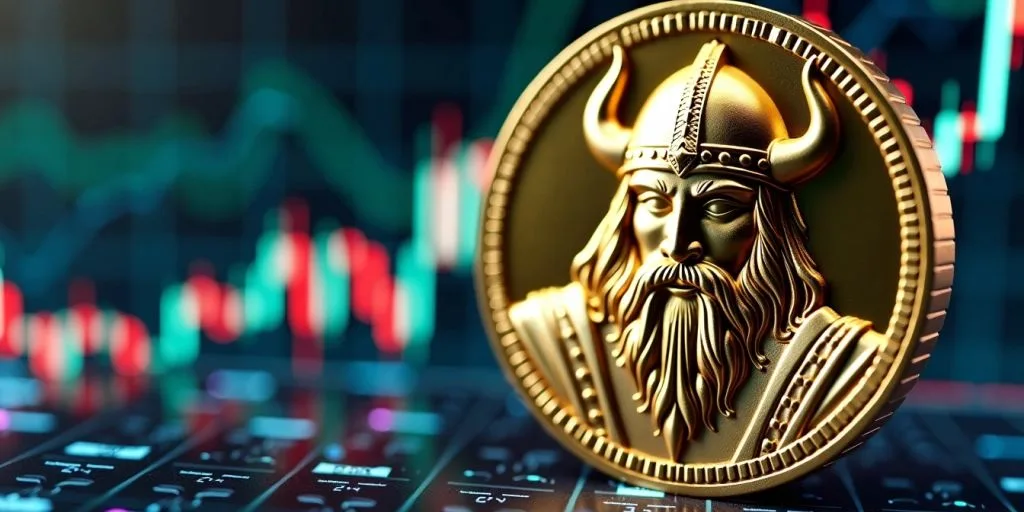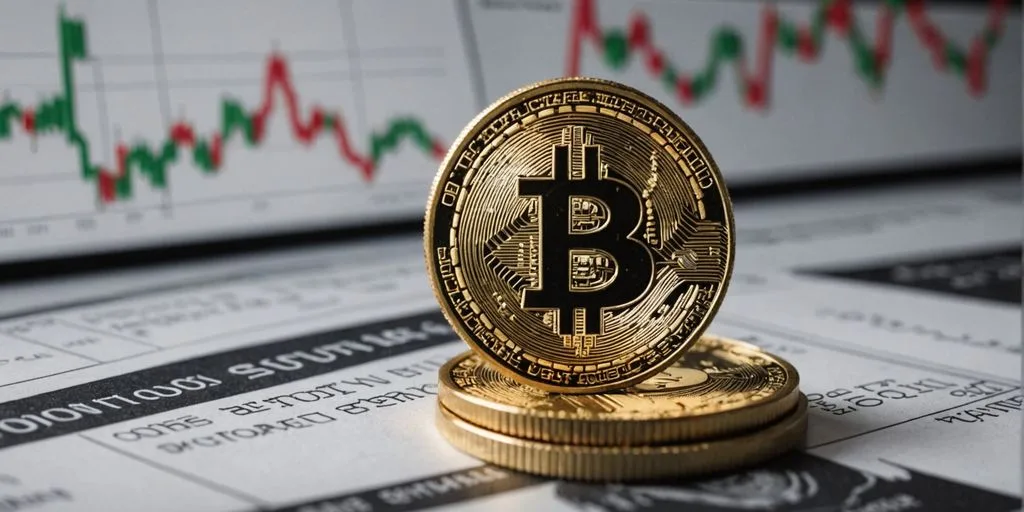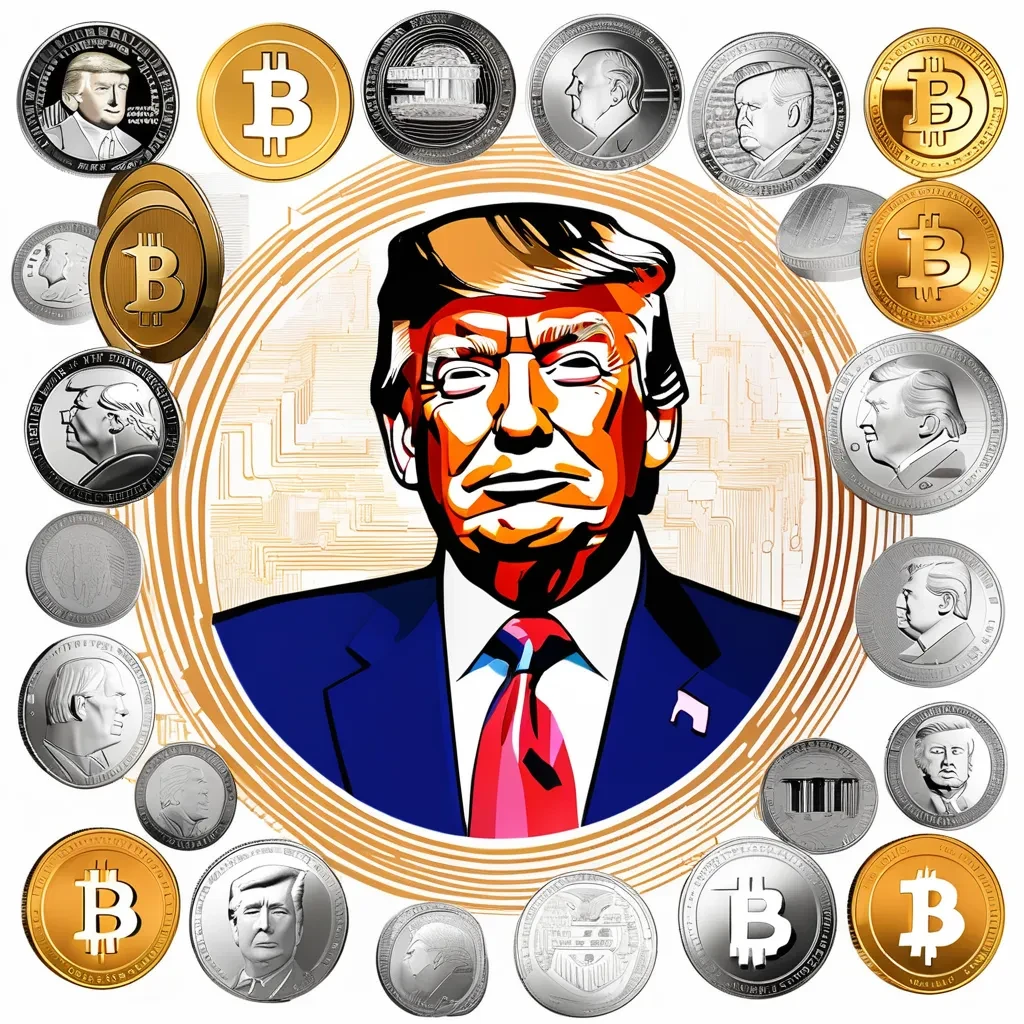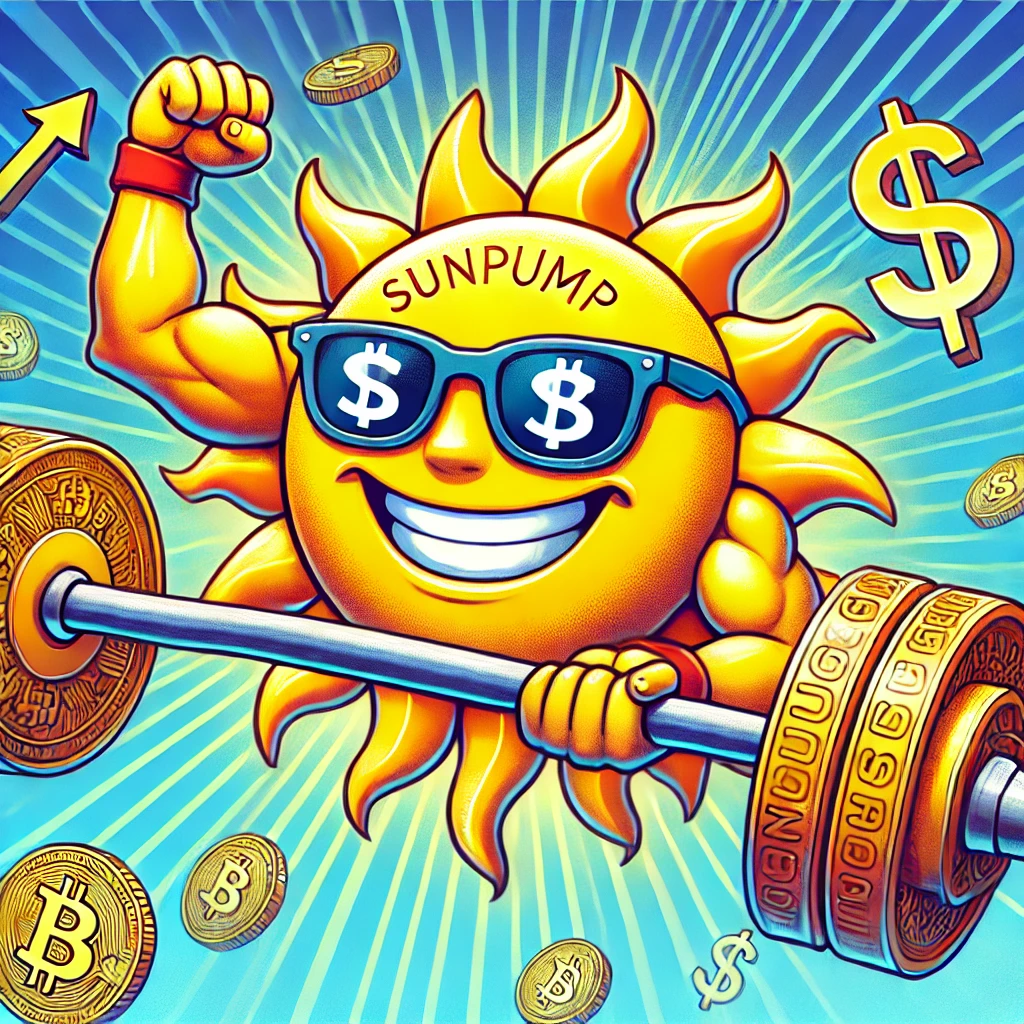Floki Crypto has quickly become a hot topic in the world of digital currencies. Born from a tweet by Elon Musk, this meme coin has evolved into a comprehensive ecosystem. With its unique blend of community support, technological innovation, and philanthropic efforts, Floki Crypto is capturing the attention of both novice and seasoned investors. However, like all investments, it’s crucial to understand the various factors that contribute to its rise and the potential risks involved.
Key Takeaways
- Floki Crypto started as a meme coin inspired by Elon Musk’s tweet about naming his Shiba Inu ‘Floki.’
- The Floki ecosystem includes DeFi products, an NFT game called Valhalla, and a marketplace known as FlokiPlaces.
- Celebrity endorsements and strong social media presence have significantly boosted Floki’s popularity.
- Investing in Floki Crypto comes with risks such as high volatility and market manipulation concerns.
- The Floki community is involved in philanthropic activities, including animal welfare and educational projects.
The Origins of Floki Crypto
Elon Musk’s Influence
Floki Crypto’s journey began with a tweet from Elon Musk on June 25, 2021. Musk, the CEO of Tesla, announced he had named his new Shiba Inu puppy “Floki.” This tweet sparked a wave of excitement in the crypto community, leading to the creation of a new cryptocurrency named after the dog. Elon Musk’s influence on the crypto market is undeniable, and his tweet provided the initial spark for Floki’s development.
Initial Development and Launch
Shortly after Musk’s tweet, a group of anonymous developers, inspired by the viral moment, launched Floki Crypto. The project aimed to capitalize on the buzz generated by Musk’s tweet and the growing interest in meme coins. Floki Crypto was officially launched in June 2021, operating on both the Ethereum blockchain and the Binance Smart Chain (BSC) network. The dual-chain approach allowed for greater flexibility and accessibility for users.
Early Community Support
From the outset, Floki Crypto garnered significant support from the crypto community. Enthusiastic fans and members of the Shiba Inu community rallied behind the new coin, helping to spread the word and drive its early adoption. The community’s efforts were instrumental in Floki’s initial success, as they organized marketing campaigns and engaged in social media promotions to raise awareness about the new cryptocurrency.
The origins of Floki Crypto highlight the power of community and the influence of social media in the world of digital currencies. What started as a simple tweet quickly evolved into a full-fledged cryptocurrency project, thanks to the enthusiasm and support of its early adopters.
Understanding the Floki Ecosystem
Key Components of the Ecosystem
The Floki ecosystem is built on three main pillars: meme status, utility, and charity. These pillars aim to create a sustainable and attractive ecosystem for a wide range of users. The meme status leverages the cultural appeal of dog-inspired cryptocurrencies, while the utility is showcased through various projects like Valhalla and FlokiFi. The charity aspect is reflected in the community’s philanthropic initiatives.
How Floki Differs from Other Meme Coins
Floki stands out from other meme coins by offering real utility and a diverse range of projects. Unlike many meme coins that rely solely on hype, Floki has developed a suite of decentralized financial products under the FlokiFi umbrella and an NFT gaming metaverse called Valhalla. These initiatives provide practical financial services and immersive gaming experiences, setting Floki apart in the crowded meme coin market.
The Role of Floki in DeFi and NFTs
Floki plays a significant role in both DeFi and NFTs. The FlokiFi DeFi products offer services like lending, borrowing, and yield farming, with the FLOKI token serving as a utility and governance token. In the NFT space, Valhalla allows users to collect and trade unique digital assets within a virtual world. This combination of DeFi and NFT projects enhances the utility and value of the FLOKI token.
The Floki ecosystem is a decentralized protocol that enables seamless communication and asset transfers between different blockchain networks, fostering true cross-chain interactions.
Factors Driving the Popularity of Floki Crypto
Celebrity Endorsements
One of the main reasons for Floki’s rise is the celebrity endorsements it has received. Elon Musk’s tweet about naming his Shiba Inu “Floki” sparked initial interest. This kind of high-profile attention has helped Floki carve out a niche for itself in the crowded crypto market.
Social Media Impact
Social media has played a crucial role in Floki’s popularity. Platforms like Twitter and Reddit are buzzing with discussions about Floki, driving more people to invest. The community-driven initiatives and strong branding have also contributed to its widespread appeal.
Community Engagement
The Floki community is highly active and engaged. They frequently organize events, campaigns, and partnerships that keep the momentum going. This strong community support has been vital in maintaining and growing Floki’s popularity.
Floki has carved out a niche for itself with its strong branding and community-driven initiatives. It recently announced a high-profile partnership with the Million Gardens Movement, further boosting its appeal.
Investment Potential of Floki Crypto
Historical Performance
Floki Inu has shown extreme volatility since its inception. Over the past year, it has experienced a 600% increase, although it also saw a 9% drop in just 24 hours. This kind of price movement is typical for meme coins, making them both exciting and risky investments.
Market Sentiment
The current market sentiment for Floki is high, driven by recent news coverage and social media buzz. The project has a market cap of $2.4 billion, ranking it as the 6th biggest meme coin. This positive sentiment is crucial for its short-term and long-term success.
Future Projections
Crypto analysts expect that in October 2024, the Floki price might fluctuate between $0.000175 and $0.000175, with a potential ROI of 18.2%. By 2025, Floki could trade between $0.000234 and $0.000290, with an average price of $0.000270. Long-term projections for 2030 suggest that Floki’s success will depend on its ability to deliver on its promises, including charity work and educational platforms.
Floki’s future largely depends on its ability to meet its ambitious goals and the overall health of the crypto market.
Investors should keep an eye on macroeconomic factors and market trends to make informed decisions.
Risks and Criticisms of Floki Crypto
Volatility Concerns
Investing in Floki Crypto, like any cryptocurrency, comes with a high degree of risk. One of the main concerns is the potential for price volatility. Floki’s price can change rapidly due to its reliance on social media trends and celebrity endorsements. This can lead to significant losses for investors if the market sentiment shifts suddenly.
Market Manipulation Risks
There are also worries about market manipulation. Critics argue that Floki’s success is driven more by hype and speculation than by any real value or utility. This makes it susceptible to pump-and-dump schemes, where early investors sell off their holdings at a profit, causing the price to drop and leaving latecomers with substantial losses.
Skepticism from Analysts
Some analysts are skeptical about the long-term sustainability of Floki Crypto. They point out the lack of transparency and governance in the project, raising doubts about its ability to deliver on its promised use cases and initiatives. If these doubts prove valid, the popularity of Floki could decrease over time, leading to a decline in its value.
Given its dependence on social media trends and celebrity endorsements, Floki Inu’s price can fluctuate significantly in a short period, potentially leading to substantial losses for investors.
In conclusion, while Floki Crypto has gained a lot of attention, potential investors should be aware of the criticisms and risks associated with it. As with any investment, due diligence and careful consideration are key to mitigating potential risks.
Philanthropic Efforts by the Floki Community
Animal Welfare Initiatives
The Floki community has shown a strong commitment to animal welfare. They have been raising funds for animal shelters and rescue groups. This aligns with the overall theme of the memecoin, which is inspired by the Shiba Inu breed of dogs. These efforts not only provide much-needed resources for animal welfare groups but also help raise awareness about the importance of animal rescue and adoption.
Educational Projects
In addition to animal welfare, Floki has a strong focus on education. The cryptocurrency has set a vision of building schools in less developed countries. Several schools have already been constructed in Laos and Nigeria. This initiative aims to provide quality education to children in underprivileged communities, offering them a chance for a better future.
The team began its philanthropic efforts to build various schools as far back as 2022 when it announced plans to develop academic institutions in Ghana, Laos, and Nigeria.
Partnerships with Charitable Organizations
Floki has also teamed up with various charitable organizations to further its philanthropic goals. One notable partnership is with the Million Gardens Movement, a gardening campaign founded by Elon Musk’s brother, Kimbal Musk. This collaboration aims to promote sustainable gardening and provide resources to communities in need.
Technological Innovations in the Floki Ecosystem
FlokiFi and DeFi Products
Floki Inu has expanded its ecosystem with FlokiFi, a suite of decentralized financial products. These include tools like the FlokiFi Locker, which allows users to securely lock and distribute tokens. The DeFi initiatives aim to provide practical financial services to Floki users, enhancing the utility of the FLOKI token.
Valhalla NFT Game
Valhalla is Floki Inu’s NFT gaming metaverse. In this immersive game, players can earn rewards and have full ownership of the FLOKI tokens they earn. The game offers a vibrant virtual economy where users can buy, sell, and trade NFTs, fostering a dynamic marketplace within the Floki community.
FlokiPlaces Marketplace
FlokiPlaces is an NFT and merchandise marketplace where users can buy and sell a variety of digital and physical products using FLOKI as the primary currency. This marketplace aims to position Floki Inu as a payment alternative to Bitcoin, Dogecoin, and even the US dollar.
Floki has been actively pursuing new developments to strengthen its ecosystem. The team introduced a trading bot and achieved major listings.
Comparing Floki with Other Meme Coins
Floki vs. Dogecoin
Floki and Dogecoin both started as meme coins, but they have different paths. Dogecoin was created as a joke in 2013, while Floki was inspired by a tweet from Elon Musk in 2021. Dogecoin has a larger market cap and is more widely accepted for payments. On the other hand, Floki has a more diverse ecosystem, including DeFi products and NFTs.
Floki vs. Shiba Inu
Both Floki and Shiba Inu have their roots in Dogecoin. They gained popularity due to Elon Musk’s tweets. However, Shiba Inu has a larger community and more extensive use cases, such as its own decentralized exchange, ShibaSwap. Floki, meanwhile, focuses on its unique projects like the Valhalla NFT game and FlokiFi.
Unique Selling Points of Floki
Floki stands out due to its multi-chain functionality, operating on both Ethereum and Binance Smart Chain. It also has a strong charitable focus, supporting various initiatives. Additionally, Floki’s ecosystem includes a range of products, from DeFi to NFTs, making it more versatile than many other meme coins.
Future Roadmap for Floki Crypto
Upcoming Projects and Developments
Floki Inu has unveiled an ambitious 2024 roadmap, which includes plans for digital banking, DeFi integration, and metaverse expansion. These initiatives aim to solidify Floki’s position in the crypto market and attract a broader user base.
Long-term Vision and Goals
The long-term vision for Floki includes becoming a major player in the Web3 space. The team is focused on creating a comprehensive ecosystem that encompasses various aspects of blockchain technology, including DeFi, NFTs, and digital banking services.
Community-Driven Initiatives
Community engagement remains a cornerstone of Floki’s strategy. The project plans to launch several community-driven initiatives, such as educational programs and charitable partnerships, to foster a strong and supportive community.
The future of Floki Inu looks promising, with a clear roadmap and dedicated community support.
Floki Inu’s ambitious 2024 roadmap includes digital banking, DeFi integration, and metaverse expansion, aiming to solidify its market position.
How to Buy and Store Floki Crypto
Popular Exchanges for Floki
Buying Floki is quite simple, especially if you’re familiar with crypto exchanges. You can find Floki on several major centralized exchanges like Gate.io, HTX (formerly Huobi), Bybit, Poloniex, MEXC, and LBank. These platforms are user-friendly and have identity verification processes for added security.
For those who prefer decentralized exchanges (DEX), Uniswap and PancakeSwap are popular choices. Uniswap is used for buying Floki on the Ethereum network, while PancakeSwap is for the Binance Smart Chain. To use these DEXs, you’ll need a compatible wallet like MetaMask and some Ethereum (ETH) or Binance Coin (BNB) to cover gas fees.
Wallet Options
After buying Floki, you’ll need a safe place to store it. There are two main types of wallets: hardware and software wallets.
- Hardware Wallets: These are physical devices that store your crypto keys offline, making them very secure. Ledger offers two models: Nano S Plus and Nano X. The Nano S Plus is basic but effective, while the Nano X has Bluetooth and a larger screen.
- Software Wallets: These are online wallets that store your keys and are password-protected. MetaMask is a leading software wallet compatible with many blockchains, including Ethereum and Floki. It’s easy to use through a Google Chrome extension.
Security Tips for Investors
- Use Two-Factor Authentication (2FA): Always enable 2FA on your exchange and wallet accounts for an extra layer of security.
- Keep Your Private Keys Safe: Never share your private keys with anyone. Store them in a secure place.
- Regularly Update Software: Ensure your wallet and any related software are up-to-date to protect against vulnerabilities.
- Be Cautious of Phishing Scams: Always double-check URLs and avoid clicking on suspicious links.
Storing your Floki securely is just as important as buying it. Make sure to follow best practices to keep your investment safe.
Regulatory Landscape for Floki Crypto
Current Regulations
The regulatory environment for cryptocurrencies, including Floki, is constantly changing. Different countries have different rules, making it hard for investors to keep up. In some places, Floki is seen as a risky investment and is heavily regulated. In others, it is more freely traded. It’s important to know the rules in your country before investing.
Potential Future Changes
As the crypto market evolves, new regulations are likely to come into play. Governments are looking to protect investors and prevent fraud. This could mean stricter rules for trading and holding Floki. Investors should stay informed about potential changes to avoid any surprises.
Impact on Investors
Regulations can have a big impact on the value and trading of Floki. Stricter rules might make it harder to buy and sell, affecting its price. On the other hand, clear regulations can make Floki more attractive to serious investors. The Floki community’s resilience suggests that it can withstand some regulatory challenges, but it’s always good to be cautious.
Conclusion
In summary, Floki Crypto has captured the attention of many investors, thanks to its unique blend of meme culture and ambitious projects. While its future is uncertain and heavily influenced by factors like Bitcoin’s performance and social media trends, the community’s enthusiasm and ongoing developments offer a promising outlook. However, potential investors should proceed with caution, conduct thorough research, and consider the inherent risks associated with such a volatile market. As always, making informed decisions is key to navigating the unpredictable world of cryptocurrencies.
Frequently Asked Questions
What is Floki Crypto?
Floki Crypto is a digital currency that started as a meme coin inspired by Elon Musk’s Shiba Inu dog named Floki. It has since evolved into a broader ecosystem with various projects, including DeFi and NFTs.
How did Floki Crypto begin?
Floki Crypto began in June 2021 after Elon Musk tweeted about naming his Shiba Inu dog Floki. This sparked the creation of the coin by a group of developers who wanted to capitalize on the viral moment.
What makes Floki different from other meme coins?
Unlike many meme coins, Floki aims to provide real utility through its ecosystem, including DeFi products, an NFT game, and a marketplace. It also focuses on charitable initiatives and community engagement.
Is Floki Crypto a good investment?
Investing in Floki Crypto can be risky due to its volatility. It’s essential to do thorough research and consider your risk tolerance before investing. Consulting a financial advisor is also recommended.
What are the risks of investing in Floki Crypto?
The main risks include high volatility, potential for market manipulation, and skepticism from analysts. Its price can fluctuate greatly based on social media trends and celebrity endorsements.
How can I buy and store Floki Crypto?
You can buy Floki Crypto on popular exchanges like Binance and Coinbase. For storage, you can use digital wallets such as MetaMask or hardware wallets for added security.
What are the philanthropic efforts of the Floki community?
The Floki community is involved in various charitable activities, including animal welfare initiatives, educational projects, and partnerships with organizations focused on helping those in need.
What is the future outlook for Floki Crypto?
The future of Floki Crypto depends on its ability to deliver on its promises and continue growing its ecosystem. Market sentiment, social media influence, and broader economic factors will also play a role.






